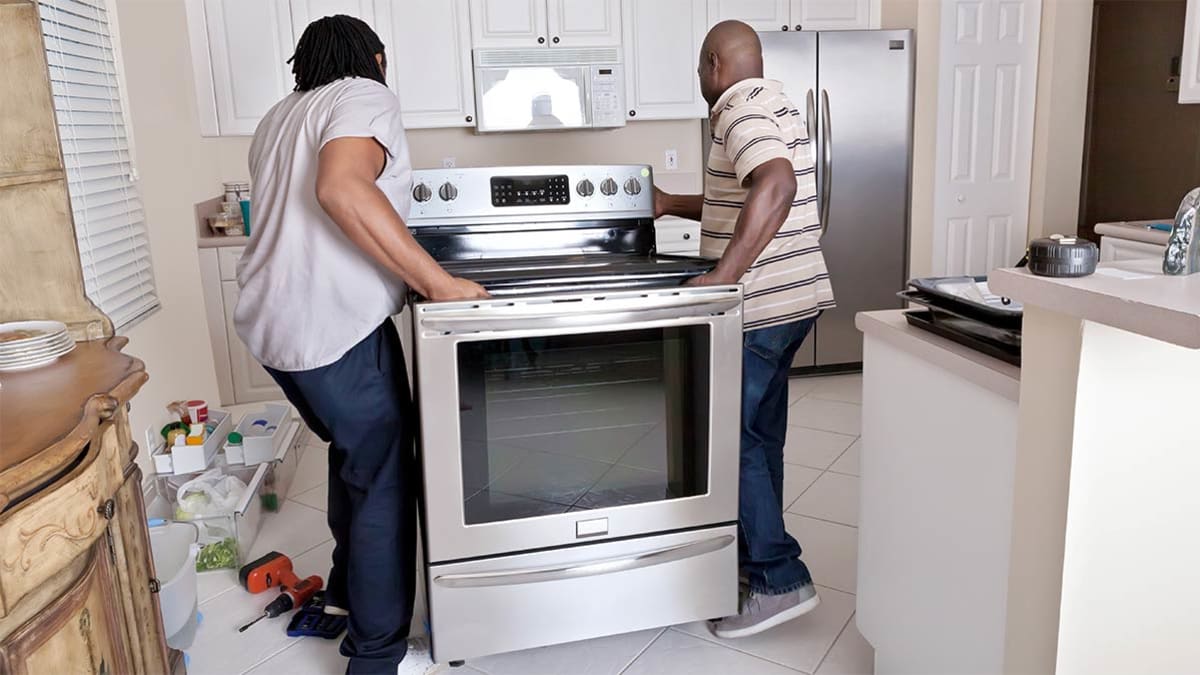Below, we’ve compiled a shopping checklist to use as you begin your journey to successfully purchasing a reliable used appliance.
Research the appliance you want. Have an idea of what features you want before you go shopping. Do you prefer a top-load washer or front-loader? Does it matter whether your fridge’s freezer is on the top or the bottom? Are you desperate for a convection oven? Is it stainless steel or bust? If you’re not sure where to start, check out CR’s buying guides for washers, dryers, refrigerators, and ranges for more info on all types of these appliances.
If what you’re looking for is harder to find—like that convection oven—ask salespeople or repair technicians to keep an eye out for you and call you if they get one in. And know which type of fuel source you have so that you don’t waste time, say, browsing electric ranges if you have gas-line connections.
You can also check out CR’s reliability ratings on brands that last for a frame of reference on your better bets. Our brand reliability rankings cover appliances from more than two dozen brands purchased new between 2014 and 2024. You can also do a model search on our website for ratings and reviews; many older appliances can still be found there. And look up which models have readily available replacement parts on repairclinic.com so that if your machine breaks, it’ll be easy to get spare parts.
Once you have a contender, find the manufacturer’s sticker, usually on the doorjamb or other inconspicuous area of the appliance. Jot down the serial number and model number. Use that to check whether it has been included in a safety recall. If the machine doesn’t have a model number and serial sticker in place, avoid it. It could have been recalled or scrapped and illegally salvaged.
You’ll also want to look for the date of manufacture stamped on the appliance’s sticker. If it’s not on the sticker, use the serial number to look it up online. Refer to the AHAM average useful life guidelines, above, to figure out how many working years your appliance is likely to have left.
One other research note: Used appliances seldom come with manuals, but manufacturers typically make them available on their websites. You can search for the model number to download the manual for your appliance.
Check a shop’s reviews. Scour Yelp and the Better Business Bureau website for red flags about stores you’re interested in, like problems with their warranties or installation. “Consumers should read reviews and make sure they’re buying from a company that will honor its warranties,” Leonardi says.
A note on warranties: Be sure to read them. A shop should give you a physical copy that’s explicit about what is and isn’t covered. Warranties should be free and cover reimbursement or replacement if the appliance dies under warranty.
Ask questions. “Similar to how you would ask about the repair service records of a used car, you want to ask what has been replaced on the appliance and what has been serviced in the past,” Notini says. If you’re at a shop, ask:
• What did you check for in your inspection of the appliance?
• Did you replace any parts? If so, did you use scrapped or new parts? (New is preferable.) Were the parts original equipment by the manufacturer (OEM) or generic (which are less than ideal)?
For instance, Leonardi Appliance installs new parts that are known to break even if they’re still working. “As technicians in the field with thousands of service calls under the belt, we know the high-failure problems with many models, so we’ll go after those common issues,” Leonardi says. “For instance, every gas dryer will get a new ignitor, coils on the gas valves, belts, rollers, and a fresh gasket.”
Other appliance store owners we spoke to told us they inspect every appliance before it hits the showroom floor. This includes testing temperatures for washing machines and refrigerators, checking motor speeds and switches, and inspecting for worn valve threads, agitator dogs, and leaking pump hoses. Those are crucial parts that you probably won’t check yourself, but it should be easy enough for the salesperson to tell you what was found.
Even if you don’t understand what all the parts do, asking questions gives you a sense of how much attention the seller gave the appliance. You can also ask whether their technicians are certified to service a specific brand you’re interested in.
Test the machine. Ask to plug it in, then:
• Check doors, knobs, and switches, whether they’re for lights or circulation fans.
• Look for any rust or damage. Some damage may be just cosmetic, like scratches and dents, but a frayed or damaged cord or cracked glass-top stove are safety issues that make the machine a no-go.
• Do a sniff test for musty, moldy smells that could indicate water damage.
• Make sure the appliance sits level.
• Look at the manual to make sure all the appliance’s pieces are there. You can do an online search for it right on your phone to see the model’s removable parts, such as shelves, drawers, and racks, that should come with the specific range or refrigerator.
Negotiate. Haggling is entirely acceptable and even expected. You may have more room to bargain if you pay in cash, buy more than one item, or take the appliance home immediately. “I would give a customer 10 percent off if they took it off my showroom floor right away,” Williams says.
Source link
